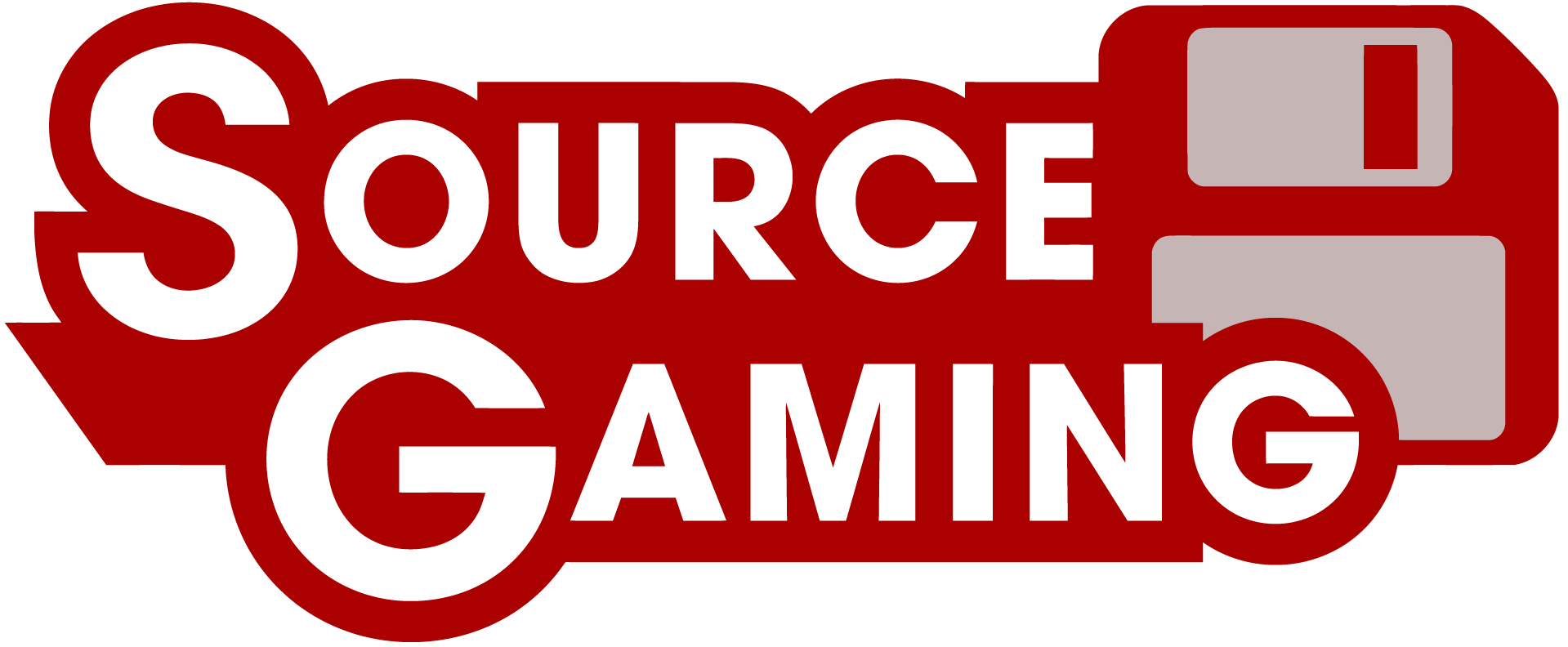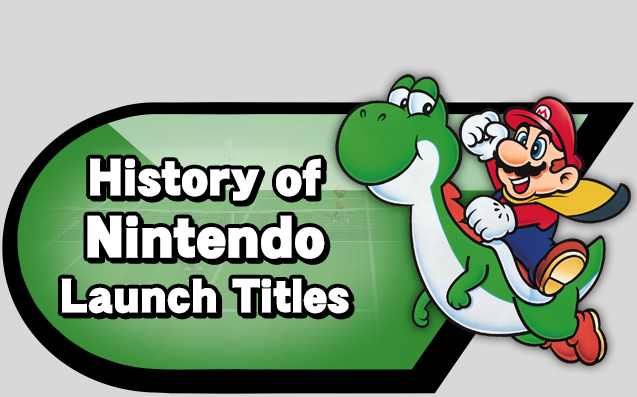Launch titles. The games that decide whether a system will have a good start or lag behind until the heavy hitters come around.

And it is proven scientific fact that nothing will ever beat the PS2 in this regard.
The Nintendo Switch, releasing exactly a month from today, looks like it could possibly lag behind for a bit given that titles such as Super Mario Odyssey, Splatoon 2 and Xenoblade 2 are due for release for some time after the Switch launches in March. But we’re not here to talk about that. We’re here to look at how Nintendo has done launch titles in the past, from the NES/Famicom all the way to the Wii U, handhelds included.
NES

Industry Savior
Being the first Nintendo console on the market, it’s fair to expect inconsistencies with launch games in the regions the NES was released in, and it’s arguably the biggest offender of the bunch. In all three major regions (U.S., Europe and Japan), there wasn’t a single game that released on launch in all three; the closest there was to that was Popeye, a Japan/Europe shared launch, and Stack-Up, a U.S./Europe shared launch.
It’s important to note that the release of the NES is probably among the most important in console history; the 2-in-1 Super Mario Bros./Duck Hunt bundle is a best-seller in the console’s library, and it set expectations for the future in regards to packed in games with consoles, which in itself is interesting to think about considering the upset about the upcoming 1, 2 Switch not being a bundled game for the Nintendo Switch.
GB

Portable Power
The beginning of Nintendo’s handheld dominance, the Game Boy had a modest launch lineup, like its NES brother, having a measly three games in Europe, four in Japan and five in the U.S. Alleyway and Super Mario Land were titles available in all regions upon launch. Of course, this is easily justifiable by virtue of it being the first handheld Nintendo platform; systems past it’s successor, the Game Boy Color, fare much better in this regard.
SNES
Superb Nintendo Entertainment
From the Super Nintendo Entertainment System forward, Nintendo would start having their launch titles be consistent. In the case of the SNES, F-Zero and Super Mario World would release on launch in every region. The U.S. would have three more launch titles than its counterparts, those being Pilotwings, Gradius III, and SimCity, likely from some small third party support.
VB

Be careful not to choke on your aspirations, Nintendo
The much maligned Virtual Boy is an outlier in Nintendo’s handheld department for obvious reasons, and its failure makes it the only Nintendo console to not be released in Europe. Had it been released in that region, it likely would have had the same titles that Japan and the U.S. got: Teleroboxer, Red Alarm, Mario’s Tennis, and Galactic Pinball.
N64

N is not the 64th letter in the alphabet, at any rate
In the same vein as the SNES, the Nintendo 64 also had two titles launch consistently in all regions with the console, being Super Mario 64, and Pilotwings 64. Beginning another trend that would repeat with later console launches, Europe would have more launch titles this time around due to receiving the console last (and therefore giving games time to localize), totalling six for the Nintendo 64, which included Star Wars: Shadows of the Empire, Turok, and FIFA Soccer 64. Of course, it’s Mario that’s the most important; Mario 64 was one of the most important games of the era, codifying how many 3D action games would be designed and played.
GBC

Game Boy Color Me Impressed
The Game Boy Color is like the NES in the sense that in all three regions, there wasn’t a single game in common on launch. In fact, Europe’s only two launch titles were ones that Japan and the U.S. would not receive on launch: Frogger and Turok II: Seeds of Evil. The U.S. and Japan did share a game in common on launch, for what it’s worth, that being Tetris DX. Not counting the Virtual Boy, this makes it an oddball in the handheld Nintendo scene.
GBA

Game Boy Advanced Technology
While the GameCube is more notable in this regard (Resident Evil 4 saying hi), the Game Boy Advance predates the GameCube in the realm of increased third party support on launch. Similar titles between regions are a bit haphazard, but they did all get Super Mario Advance, Castlevania: Circle of the Moon, Konami Krazy Racers, and GT Advance Championship Racing on launch.
GCN
With the Nintendo GameCube, Nintendo’s third-party launch support would become more apparent on home consoles. Every launch title from Japan (Luigi’s Mansion, Super Monkey Ball, and Wave Race: Blue Storm) would also release on launch in the other two regions. The number of games at launch in both the U.S. and Europe would experience a notable increase due to the aforementioned third-party support, with games like Star Wars: Rogue Squadron II, Crazy Taxi, and Tony Hawk’s Pro Skater 3 being released on launch with both consoles. Once again, Europe got more launch titles; 20 to be exact.
NDS

Nintendo [Jesus Christ This Is] Durable Stuff
Wii

Wii Are The Champions
The Wii is unique in the realm of Nintendo’s home console launches; it would be the first and only one to have a The Legend of Zelda title (Twilight Princess) on launch in all regions before Breath of the Wild’s forthcoming release on the Nintendo Switch. Furthermore, it is also the first instance in which the U.S. saw the first release, November 19th, 2006, compared to December 2nd, 2006, for Japan. Famously, Wii Sports was bundled with the console in all non-Japan regions, a distinction which makes it the third best selling video game of all time. Wii Sports was also one of the most iconic games of the seventh console generation, and its almost literal “pick up and play” ethos both defined the Wii era and was instrumental in video games becoming even more of a mainstream industry.
Also unique to the Wii is the introduction of downloadable games, a first for Nintendo consoles. Emulation for games on past systems such as the NES, N64 and TurboGrafx-16 were added to what would become the Virtual Console throughout the Wii’s lifespan, as was the WiiWare platform, which provided original, smaller-scale downloadable titles.
Wii U

I’m not Wii, U are
Knowing how infamous the Wii U was in regards to third party titles, it may seem ironic that the console launched with a surplus of them (less so in Japan), with all three regions getting titles like Batman Arkham City: Armored Edition, Assassin’s Creed III, Mass Effect 3 and the more notably promoted ZombiU on their launch dates. First party launch titles were limited to Nintendo Land and New Super Mario Bros. U in all regions. Those two are notable in explaining the Wii U’s failure; the relative drought of first party titles lead to some of the better known Wii U games being released relatively late in the console’s lifespan; games like Splatoon and Super Smash Bros. were good enough to avert being shafted, but others like Star Fox Zero weren’t so lucky.
3DS

[Virtual Boy cries in the distance]
Overall, Nintendo’s launch history is complicated to summarize, but it’s an interesting perspective on how they’ve handled launches in the past. Arguably their best launch relative to what was being sold was the Wii, what with the presence of Twilight Princess on the system plus it’s insane popularity for the time. Whether that scenario’s extreme luck is replicated with Breath of the Wild to give the Switch a strong launch remains to be seen.










Wii Sports was not bundled in all regions. Japan had to buy it seperately.
Whoops, my bad. Thanks for pointing that out.
Shouldn’t the 3DS be listed before the Wii U??